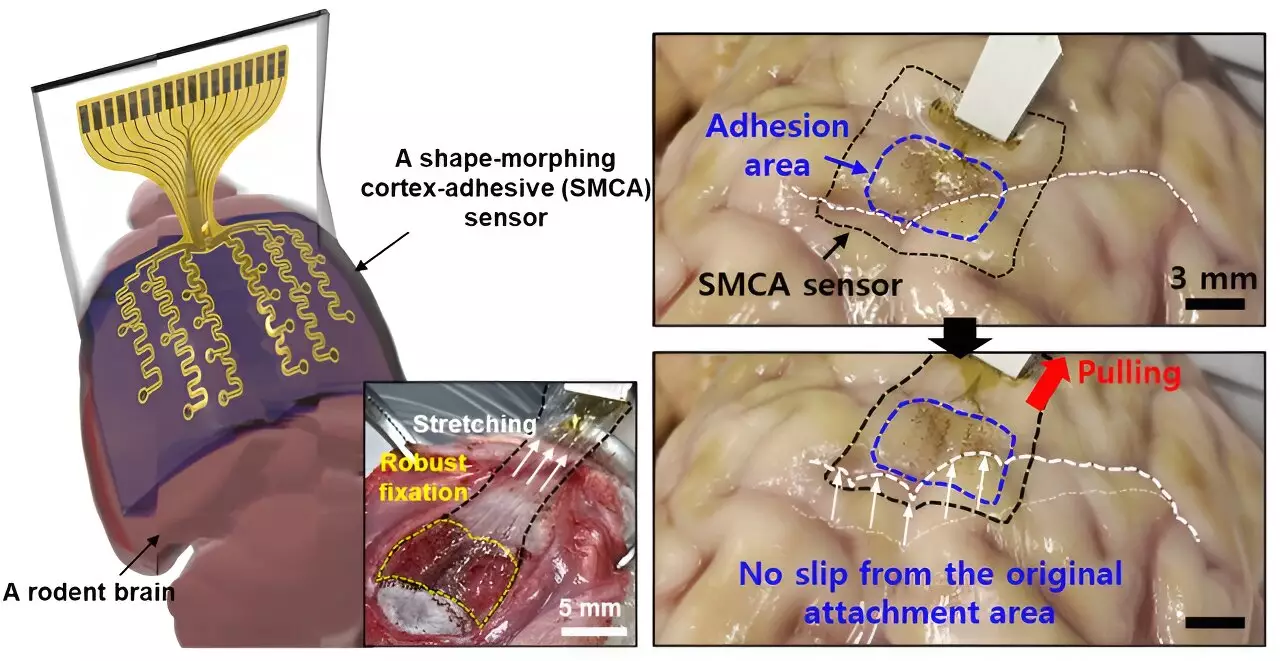Recent innovations in medical technology are shedding light on new treatment avenues for neurological disorders. Among these advancements, Transcranial Focused Ultrasound (tFUS) stands out as a non-invasive procedure that utilizes high-frequency sound waves to stimulate targeted areas of the brain. This promising therapeutic approach offers hope for conditions often resistant to conventional treatments, such as drug-resistant epilepsy and disorders characterized by recurrent tremors.
In a groundbreaking study from researchers at Sungkyunkwan University (SKKU), the Institute for Basic Science (IBS), and the Korea Institute of Science and Technology, a new sensor has been developed to enhance the efficacy of tFUS. This novel device addresses long-standing limitations of previous sensors used in neurology and opens the door for potential clinical applications.
Historically, one of the challenges faced by brain sensors designed for surface contact has been their inability to conform adequately to the intricate folds of the brain’s surface. Donghee Son, the supervising author of the research, noted that prior technologies struggled to deliver precise measurements, leading to difficulties in analyzing brain signals or diagnosing lesions accurately. Existing sensors, while innovative, performed poorly in areas with significant curvature, often slipping out of place due to brain pulses or the movements of the cerebrospinal fluid (CSF).
The limitations encountered by sensor technologies have hindered their wider applications in clinical settings. These constraints reduce the durability and reliability of the devices, thus impacting their potential for long-term usage in monitoring brain activity accurately. To resolve these challenges, the research team sought to design a sensor capable of effectively adhering to complex brain surfaces, a critical factor in ensuring precise and consistent readings over time.
The new sensor, referred to as the ECoG, boasts a remarkably impressive design that allows it to adhere securely to brain tissue, eliminating gaps that might result in signal noise from external movements. “This capability is essential for enhancing the effectiveness of treatments like low-intensity focused ultrasound (LIFU),” explained Son. The ability of the sensor to maintain contact with brain tissue can significantly improve the precision of epilepsy intervention, crucial for customizing treatments to individual patient needs.
The innovative design comprises multiple layers, integrating a hydrogel layer that bonds with brain tissue physically and chemically, a self-healing polymer that adapts to surface shapes, and a stretchable layer with precision-engineered gold electrodes. This multi-layered approach not only promotes a robust attachment to the brain but also allows monitoring during ultrasound stimulation without interference from external vibrations.
One of the most exciting aspects of this technological development is its potential to facilitate personalized treatment strategies. Recent studies have highlighted the variability in patient responses to ultrasound treatment, underscoring the necessity for real-time brain wave monitoring to tailor interventions effectively.
Historically, brain sensors that were designed for such tasks encountered significant challenges, primarily due to noise introduced during ultrasound-induced vibrations. Son’s new sensor aims to mitigate these noise issues, providing a clear path toward developing personalized ultrasound treatment strategies. The elimination of noise enables consistent monitoring of brain waves while specific areas are stimulated, paving the way for individualized therapeutic techniques.
Proving Efficacy in Preclinical Models
Initial testing of the sensor demonstrated promising results in awake and living rodent models, with researchers able to achieve accurate brain wave measurements and even control seizure activities effectively. As the team looks to advance the device, they plan to enhance the sensor’s capabilities by implementing a high-density array of electrodes, significantly increasing its potential for detailed brain signal mapping.
The development team envisions a future where this neurotechnology not only addresses epilepsy but also aids in diagnosing and treating a variety of neurological disorders. The implications of integrating high-resolution data with flexible sensor technology have broad applicability and may pave the way for innovative prosthetic technologies as well.
As research progresses, the newly developed transcranial focused ultrasound sensor embodies a significant leap forward in neuroscience and therapeutic interventions. By overcoming the challenges posed by conventional brain sensors, this innovative technology fosters enhanced communication between patients and doctors, leading to more effective, individualized treatment options.
With the potential to transform approaches in neurology and beyond, this breakthrough promises not only to enhance treatments for epilepsy but could also revolutionize the way we understand and interact with the brain’s complex systems. As these technologies continue to evolve, the future of neurological treatment appears increasingly bright.


Leave a Reply